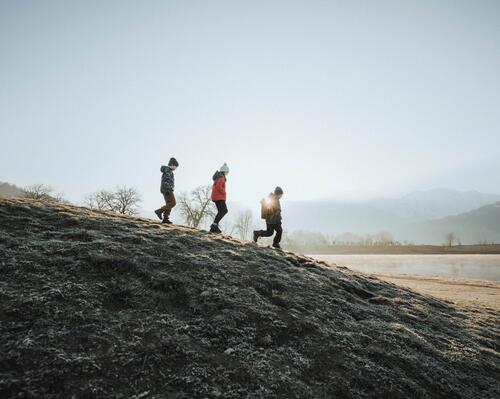> Layer 1: moisture management
The first layer closest to the skin should be a technical base layer. Thanks to its specific components, it wicks moisture away from the body and keeps you dry.
During exercise, the technical base layer allows the body to wick moisture away and therefore to regulate its temperature. This prevents the body from overheating
After exercise it dries quickly, which limits the freezing-effect, the cooling down that occurs when the water trapped in the fabric evaporates.




